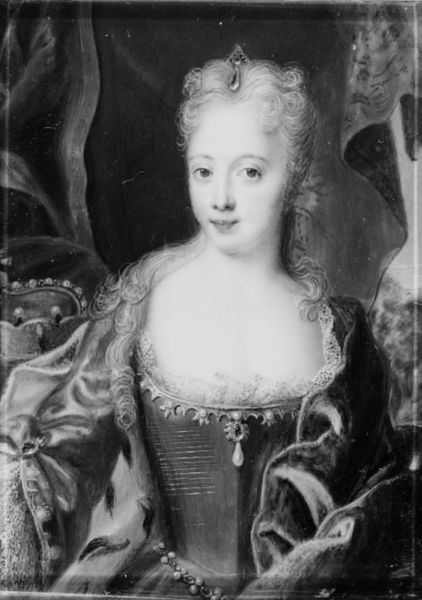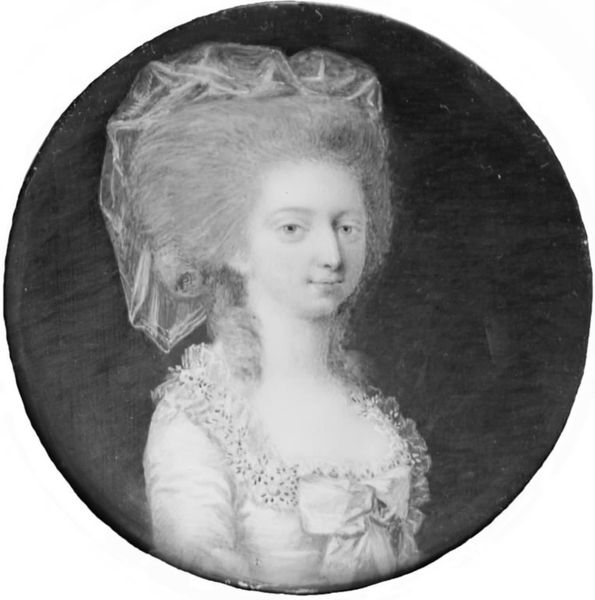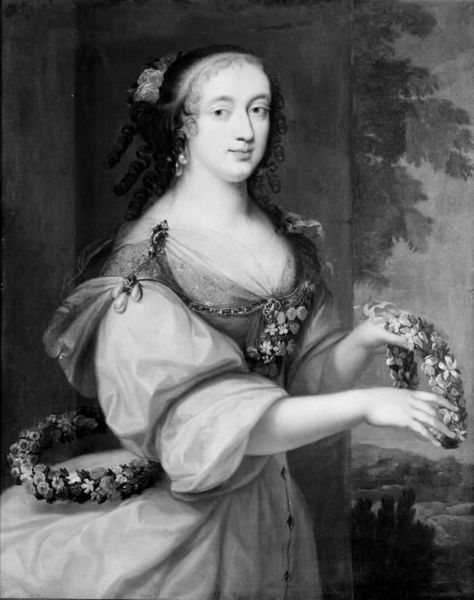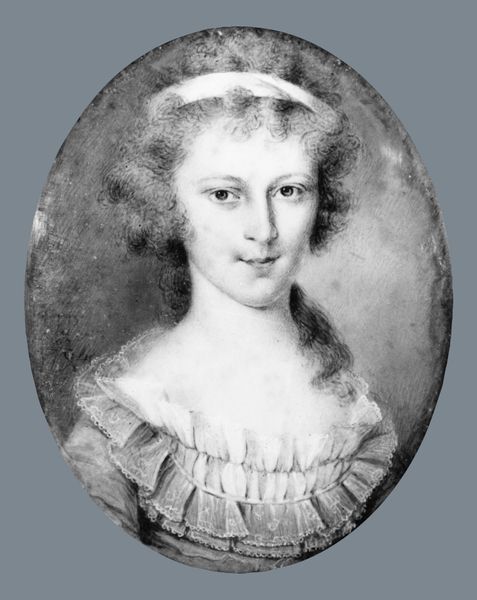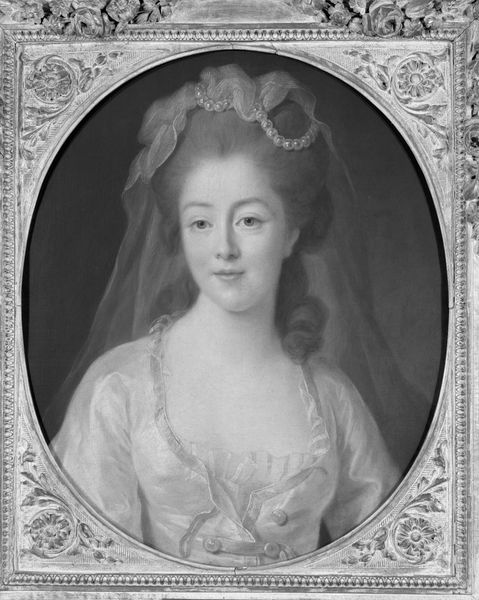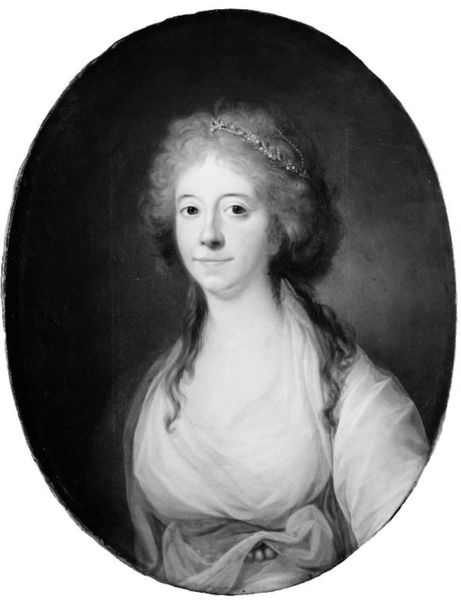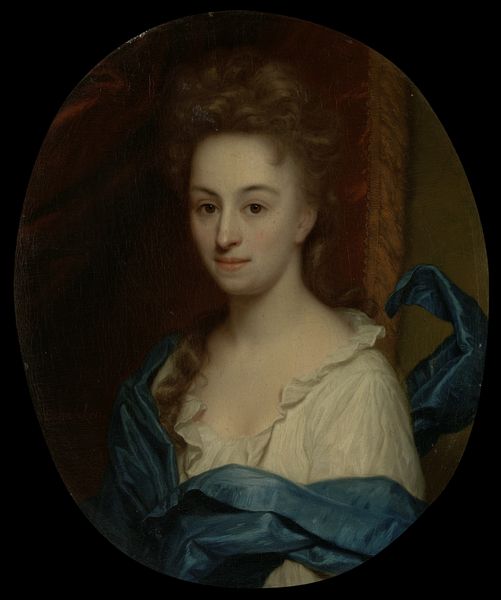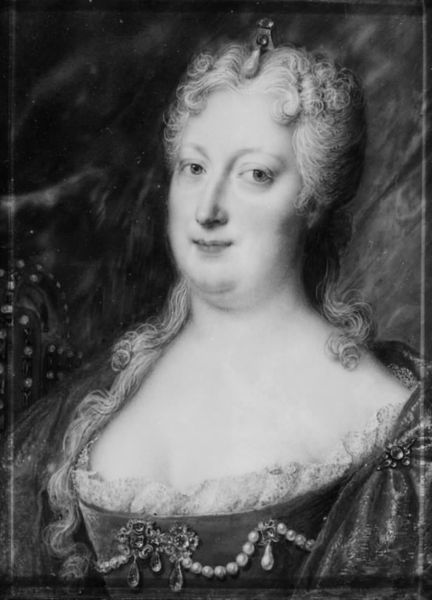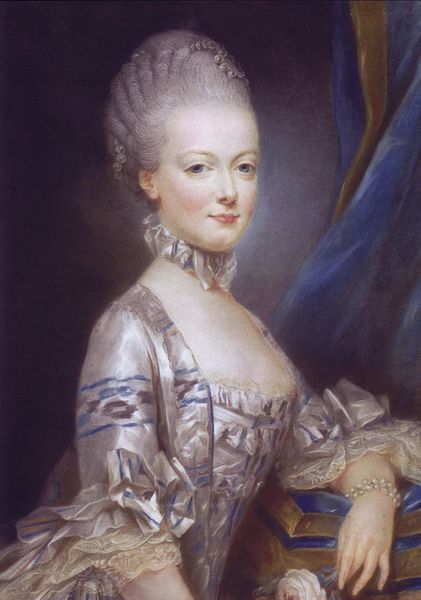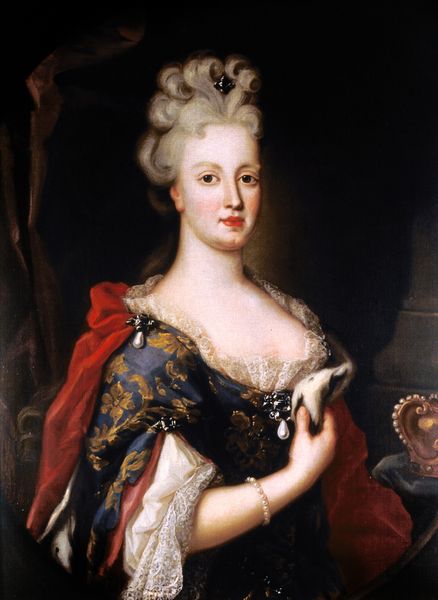
oil-paint, ivory
#
portrait
#
baroque
#
portrait image
#
oil-paint
#
black and white
#
history-painting
#
ivory
#
realism
Dimensions: 9.4 cm (height) x 6.8 cm (width) (Netto)
Curator: Andreas Møller painted this portrait of Archduchess Maria Theresa in 1727, and it's an oil on ivory miniature. Editor: What strikes me immediately is the incredible delicacy and precision. Despite the obviously minute scale, the details of her dress and hair are so sharply defined. It's really remarkable. Curator: Indeed. The use of ivory as a base is fascinating here; it lends a unique luminosity to the skin, a characteristic almost impossible to replicate with other supports. Notice how the light seems to emanate from within. Editor: Absolutely. But considering the subject, it's hard not to also think about the immense socio-political weight she carried. Archduchess Maria Theresa, heir to the Habsburg throne... this small object functioned as a projection of power, circulating within elite circles, reinforcing status and dynastic ambitions. Curator: Good point, I think her gaze also seems designed to impress on the viewer a regal sense of self, of unyielding authority, but consider the artistic construction as well: the careful placement of the figure in relation to the crown placed subtly in the background creates depth within a compressed field. And see the textural contrast between her elaborate hair and the smoothness of her skin, heightened by the minimal color palette. Editor: Yes, that calculated simplicity allows the subject to stand out without overshadowing any messages, the very absence of flamboyance may have conveyed something about the subject, such as her resolve. It would be worthwhile to trace who owned the painting after its completion to help unveil its meanings for those various parties at that time. Curator: It really highlights Møller's incredible skill in conveying depth and dimension in such a restricted space. One has to wonder how many sittings he had with her, considering that precision would have taken time. Editor: I concur. These insights certainly give us something to think about; hopefully, the listeners appreciate those two aspects when considering its role in history and artistry. Curator: Agreed; thank you for adding to that reflection with me.
Comments
No comments
Be the first to comment and join the conversation on the ultimate creative platform.
